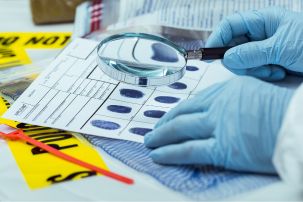Fiction is filled with great detectives, like Sherlock Holmes - able to conclude the way in which someone met an untimely demise and, through careful observation, obtain clues as to who the perpetrator of the crime was. This time-honoured tradition is as popular now, in the form of the numerous 'CSI' spin-offs and many other forensic procedural TV shows. All too often, it seems like all one needs to be a forensic investigator is a well-timed quip and a computer to enhance even the grainiest of images.
But what do real-life forensic investigations look like? In these lessons, designed for middle-secondary school classes, students will explore the science behind the TV shows to answer this very question. By the end of these lessons, your students will be able to separate the fact from the fiction of forensic science and even set up their own crime scene for their classmates to analyse.
These lessons are intended to be taught as a unit of lessons about forensic science. It’s highly recommended to teach these lessons as a complete unit, but it is possible to select individual lessons for use.



Welcome back!
Don't have an account yet?
Log in with:
Create your free Cool.org account.
Many of our resources are free, with an option to upgrade to Cool+ for premium content.
Already have an account?
Sign up with:
By signing up you accept Cool.org's Terms and Conditions(Opens in new tab) and Privacy Policy(Opens in new tab).